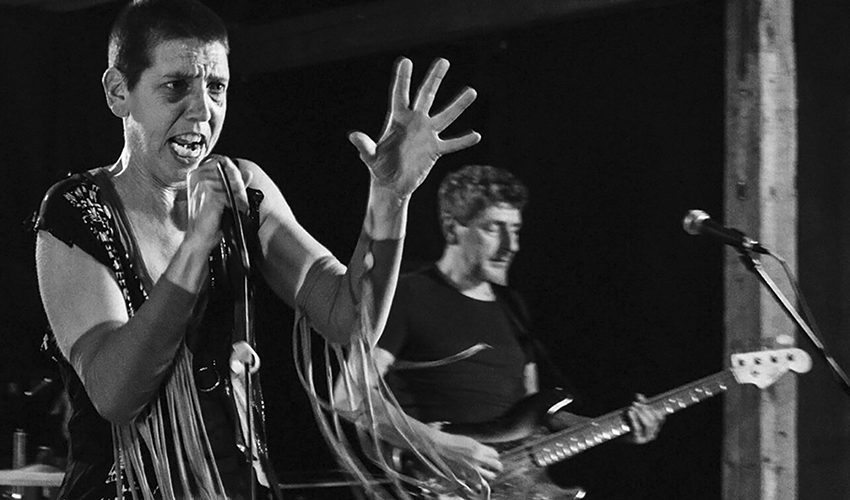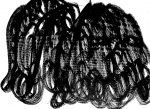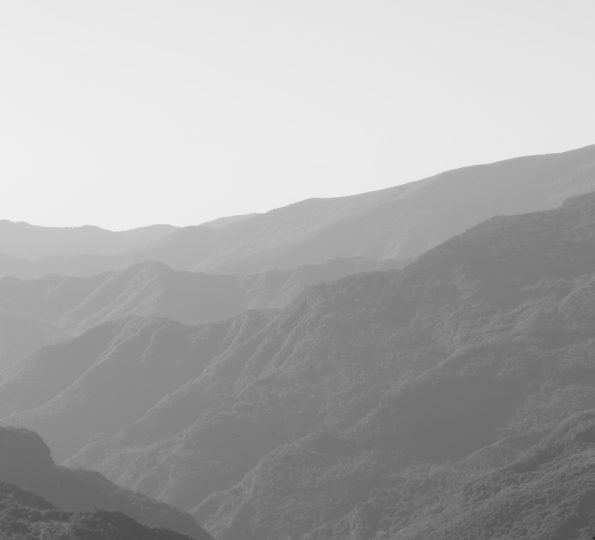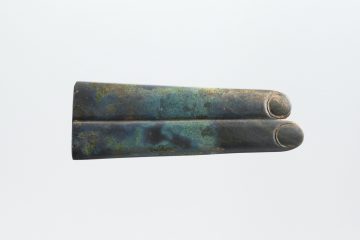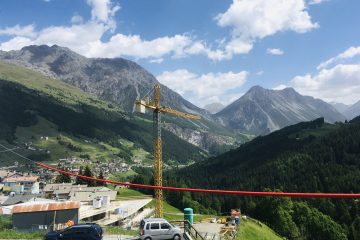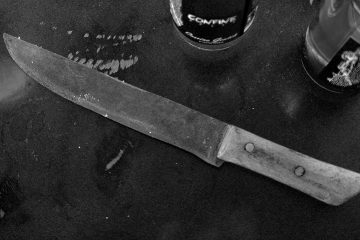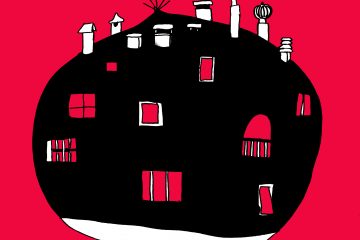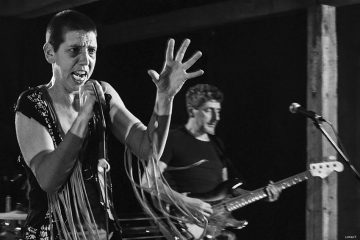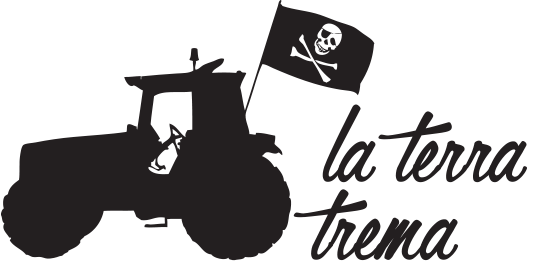English version below
Singer e songwriter, punkrocker, rivoltosa, ha viaggiato per il mondo con la sua musica assaggiando sapori provenienti da luoghi diversi, interessanti, per lei vegetariana per la maggior parte della vita e che, per anni, in cucina ha assecondato questa scelta. Attraverso Illustreat ha deciso di condividere ricette, metodi, prima di tutto alla piccola comunità abruzzese dove ha scelto di stabilirsi, creando Invizin
testo di Jacopo Andreini
foto di Hilary Binder, Lukáš Bláha, Filip Remunda
Hilary è una forza della natura. Quando è arrivata a Tornareccio hanno iniziato a chiamarla “La Tempesta” e festeggiato ogni anno da allora la data del suo arrivo con la comunità locale. Nativa di Washington DC e cresciuta culturalmente a San Francisco alla fine degli anni Ottanta, dopo aver passato decenni in giro per il mondo con i c, letteralmente: ha suonato in paesi che la maggior parte dei rocchettari non sa nemmeno che esistano, figuriamoci trovare il modo di arrivarci con una logica e una pratica profondamente DIY (Do It Yourself) come la sua. Insieme al suo compare Chris Rankin ha gestito il Cesta (un centro culturale polidisciplinare e internazionalista nato a Tabor nel 1993, in Repubblica Ceca) ma da qualche tempo ha deciso di trasferirsi sulle montagne dell’Abruzzo.
Ci conosciamo e frequentiamo da almeno venticinque anni ma è solo recentemente che le nostre conversazioni si svolgono in italiano, lingua che, nel frattempo, Hilary ha aggiunto a quelle che parla con fluidità invidiabile.
Durante un tour passo a trovarla a Invizin, centro culturale da lei ideato, dopo una deviazione di cento chilometri per portare una copia de L’Almanacco alla Trattoria Anita a Cupramontana in tempo per l’anniversario di matrimonio dei gestori, il che ha contribuito a dare sapore al viaggio odierno.
Il Luogo
Con Hilary parliamo, durante una colazione molto articolata, di Illustreat e Invizin, le sue attività principali in questa fase della vita insieme alla musica, che continua a produrre ed esplorare con più progetti: Polemica, Riot Trio, Kac˘kala e Sabot (di nuovo in pista dopo una pausa di sette anni).
«Quando ho aperto Invizin avevo delle idee che mi portavo dietro dalle esperienze passate, mentre altre sono venute quando sono entrata in contatto con la comunità locale.
Per quanto riguarda Illustreat, invece, ho cominciato quando ho trovato nella cucina italiana, e in particolare in quella abruzzese, piatti non solo vegetariani ma anche vegani. Anche se la mentalità qui in Abruzzo è che sei malato se non mangi arrosticini!
Il mio modello è sempre stato quello di parlare meno e fare di più, creare la possibilità di esplorare vegetarianesimo, veganesimo e probiotico fuori dalle mode e avvicinare la comunità alla sostenibilità per tornare a sapere cosa mangiamo.
Con questa esperienza ventennale adesso voglio esportare ciò che ha funzionato bene e sperimentare di più su come si crea il cibo, non solo come si consuma».
Torniamo a parlare di Invizin, il centro culturale: «Ho fatto un paio di progetti pilota, ma questo appartamento va bene per poche persone alla volta: se fossero di più non sarebbe comodo né per loro, né per me. Questo è il continuamento, il futuro, del lavoro iniziato in Repubblica Ceca.
Oggi, qui, mi interessa di più organizzare una rete locale: al Cesta sono serviti vent’anni per arrivare ad avere il sostegno dalla comunità e quando è successo non è andata molto bene!».
Ad Invizin informazione, condivisione e potenzialità sono alla base di tutto: «Qui c’è un quarto dei libri che ho raccolto al Cesta, perché per me un posto così deve avere una biblioteca. I libri devono essere la prima cosa che vedi quando entri, per far capire che non sei in un club o un ristorante.
Da queste parti non esiste nessuna biblioteca e vale la pena farne partire una per creare, salvare, mettere in evidenza delle cose. Sarà una cosa collaborativa: qui ci sono molti disoccupati che passerebbero volentieri il tempo in biblioteca per studiare e contribuire ad ampliarla. Qualcuno potrebbe ingrandire la sezione dell’architettura sostenibile, ad esempio! Io mi occupo di arte, attivismo, LGBTQI, femminismo. Per ora è aperta solo quando ci sono le serate, e questo non va bene: a questo devo trovare una soluzione.».
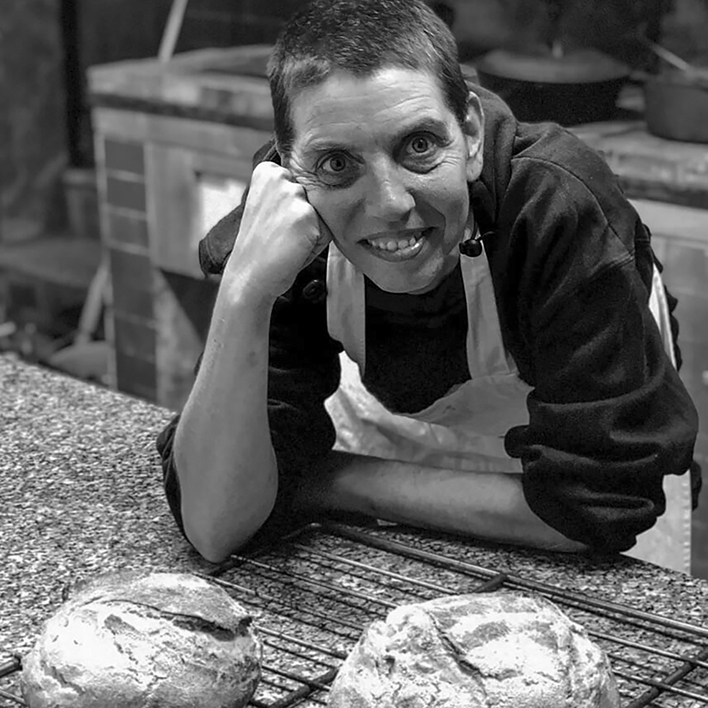
La Cucina
Le chiedo di spiegare più nel dettaglio Illustreat: «Una grande parte di Illustreat è insegnare come si fa da mangiare. Sono entrata nel circuito di Genuino Clandestino che qui in Abruzzo è ancora embrionico, ma che è una bella cosa per far crescere la mentalità dell’autodeterminazione e del metodo biologico di produrre il cibo. Per questo ho ospitato il mercato qui durante il Maia Festival, che facciamo in coproduzione in estate, per mettere insieme musica, arte e arte del cibo.
È una consuetudine che mi porto dietro da San Francisco ma anche dal Cesta: unire ambiti che non sono – o che non è visibile che siano – in correlazione. Illustreat ha influito anche sulla scelta della casa: cercavo un posto con una cucina grande perché avevo l’idea di metterla a disposizione di grandi gruppi di persone».
«Devo anche ringraziare Chris Rankin che ha cucinato da tutta una vita, perché avendo genitori divorziati entrambi abbiamo imparato dai tempi della scuola a tornare a casa e occuparci della cena. Abitare con Chris, cuoco professionista in grado di preparare con poche risorse pasti buonissimi per molte persone, è stata un’esperienza migliore di tutti i ristoranti dove posso aver lavorato. Lì imparavo a cucinare scolasticamente, con Chris invece era proprio improvvisare con il cibo. Per questo non uso quasi mai le ricette: studio più il processo chimico che sta dietro e lo applico nelle diverse situazioni. Così posso usare quello che mi trovo davanti, sperimentando un po’ perché so già come funzionano alcune combinazioni di ingredienti. Penso che sia interessante! Hai visto come ieri sera hanno mangiato tutti bene? Per me quando il gruppo sta mangiando è uno dei momenti perfetti della vita».
Hilary è pragmatica e realistica e resta inarrestabile: dopo aver organizzato e suonato nel mini-festival della sera precedente, cucinato per venti persone, girato un videoclip e fatto questa lunga chiacchierata con me, porterà il pranzo a un artista che sta dipingendo un murale nel paese vicino. Il tutto sempre col sorriso sulle labbra e mille pensieri in fila nei discorsi: «Mi sono resa conto che questo sarà l’ultimo progetto nella mia vita che posso seguire dall’inizio: per la mia età, per le energie necessarie a confrontarsi con il sistema e soprattutto perché sono da sola. Forse in futuro cambierò ruolo e passerò a condividere conoscenze che forse possono aiutare altre persone a realizzare i loro progetti. È molto importante per me questo, in quanto anarchica: sperimentare e imparare attraverso il metodo di passare o condividere le informazioni in modo anti gerarchico. Mi dà fastidio il rapporto tra insegnante e studente, anche quando ci si trova nella situazione di una persona con grande esperienza che si confronta con qualcuno che è all’inizio. Può darsi che arriverò a questo risultato fra dieci anni, ma adesso è il momento di agire e non di mettersi a pensare».
La relativa stanzialità di questi anni l’ha portata a confrontarsi con persone diverse da quelle che si incontrano nel circuito del punkrock a qualsiasi latitudine: «Voglio provare a fare una casa alternativa per le signore sole, in pensione ma ancora autonome: voglio creare un progetto con le ragazze giovani e farci vivere entrambi i gruppi. Devono entrare volontariamente e serve anche che la città capisca il progetto e abbia voglia di farlo. Vediamo cosa succede se uniamo professionisti e artisti, persone che cercano questo processo anarchico di condividere le informazioni…».
Naturalmente ha già iniziato a sperimentare: «Quando c’è un’idea più grande devo trovare un metodo attivo e semplice per mettere in moto il processo di sperimentare e raccogliere più aspetti e informazioni. C’era un signore qua, di San Giovanni, ex macellaio, completamente innamorato di me, anche se sono lesbica, anarchica e vegetariana! Veniva qua ogni giorno a parlare e bere il caffè. Dopo sei mesi di frequentazione gli ho parlato dell’idea, perché aveva una casa vuota che ha costruito ma che non interessava alla sua famiglia. Purtroppo è morto non molto tempo dopo ma aveva iniziato a parlarne con altri abitanti di San Giovanni, con la Chiesa… è molto importante che avesse preso l’iniziativa così sul serio, perché è un progetto molto fuori dalla mentalità locale».
L’attività costante e focalizzata sul qui e ora, insieme alle conoscenze apprese nel passato e la visione prospettica di progetti che possano svilupparsi nei prossimi quindici o vent’anni sono una ricchezza inesauribile. Riparto da Invizin ricaricato da un pieno di voglia di fare, senza limiti.
da L’Almanacco de La Terra Trema. Vini, cibi, cultura materiale n. 18
16 pagine | 24x34cm | Carta cyclus offset riciclata gr 100 | 2 colori
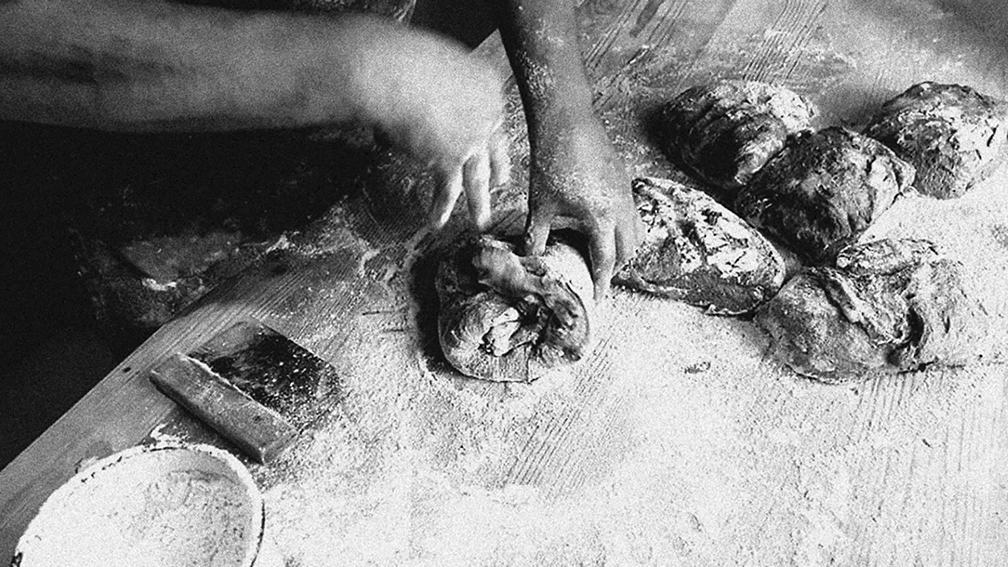
The Storm| Interview with Hilary Binder – Illustreat / Invizin
by Jacopo Andreini
Hilary is a force of nature. When she arrived in Tornareccio, they started calling her “The Tempest” and every year she celebrates the date of her arrival with the local community. A native of Washington DC, she was culturally raised in San Francisco in the late 1980s, and after spending decades with her friend Chris Rankin traveling the world together as Sabot – literally: they’ve played in countries most rockers don’t even know exist, let alone find the way to get there with a logic and deeply DIY practice like theirs – and co-managing CESTA (a multidisciplinary and international cultural center in Tabor, Czech Republic), she decided to move to the mountains of Abruzzo. We have known each other and met frequently for at least twenty-five years, but it is only recently that our conversations have taken place in Italian, which, in the meantime, Hilary has added to the languages she speaks with enviable fluency. I am visiting her at Invizin during a tour, after a detour of 100km to bring a copy of L’Almanacco to the Anita restaurant in Cupramontana, which helped to give today’s trip a bit of flavor. During a very articulate breakfast, we talk of Illustreat and Invizin, two of her main activities in this phase of her life along with the music that she continues to produce and explore with Polemica, Riot, Kačkala and Sabot (back on track after a break of 7 years).
“When I started Invizin I brought ideas with me from past experiences, while I got others when I made contacts in the local community. For Illustreat, on the other hand, I found that eventhough in Italian cuisine, and particularly in the Abruzzese one, there are dishes that are not only vegetarian but also vegan, the attitude here in Abruzzo is that you are sick if you don’t eat arrosticini! My main methods have always been to talk less and do more, create the possibility to explore the world of vegetarianism, veganism & probiotics, stay away from diet trends, more seriously integrate what we eat every day with a community and sustainability perspective, as well as get back to knowing what we eat from a psychological and health point of view. So, now with twenty years of experience, I want to export what has worked well and experiment more on how food is created, not just how it is consumed.”
Let’s go back to Invizin, the cultural center: “I did a couple of pilot residency projects, but this apartment is only good for a few people at a time: if there were more, it wouldn’t be comfortable for them or for me. This is a progression on the work I started in the Czech Republic. I am already doing it, but not officially. I’m more interested in organizing a local network: it took Cesta 20 years to get support from the community” and when it happened it wasn’t perfect! Obviously, information, sharing and possibilities are the bases of everything: “Here is a quarter of the books I collected at Cesta, because for me a place like this must have a library. They are the first thing you see when you enter, making it clear that you are not in a club or restaurant. There is no library in this area, and it is worth starting one in order to create, save, and highlight things. It can be a collaborative project: there are many unemployed people who could spend time in this library studying and expanding it. Someone could expand the sustainable architecture section, for example! I deal mostly with art, activism, LGBTQI, feminism. For now, it is only open when there are events, and this isn’t good: I have to find a solution.”
I ask her to explain Illustreat in more detail: “A big part of Illustreat is teaching people how to make food. I joined the Genuino Clandestino circuit, which here in Abruzzo is still embryonic, but it is a good way to highlight the method of self-determination within the production of organic food. I also hosted the market here during the Maia Festival, which I do as a co-production in the summer, bringing together music, art and food art. This is a tradition that I carry with me not only from San Francisco, but also from Cesta: uniting disciplines that are not normally or visibly correlated. Illustreat also influenced the choice of the house: I was looking for a place with a large kitchen because I wanted to make it available to and for large groups of people. I also have to thank Chris Rankin, who has been cooking his whole life. Having divorced parents I learned to come home from school and take care of dinner. Living with Chris, a professional chef who knows how to prepare delicious meals with few resources for many people, gave me more experience than all the restaurants I have worked in. I learned to cook technically, but with Chris it was more about improvising with food. For example, I hardly ever use recipes; I study more the chemical process, and then apply it in different situations. So, I can use what is in front of me. I can experiment a bit because I already know how certain combinations of ingredients work, using the science behind food combining. I think it is interesting! You saw how everyone ate well last night. For me when a group is eating well it is one of life’s perfect moments.”
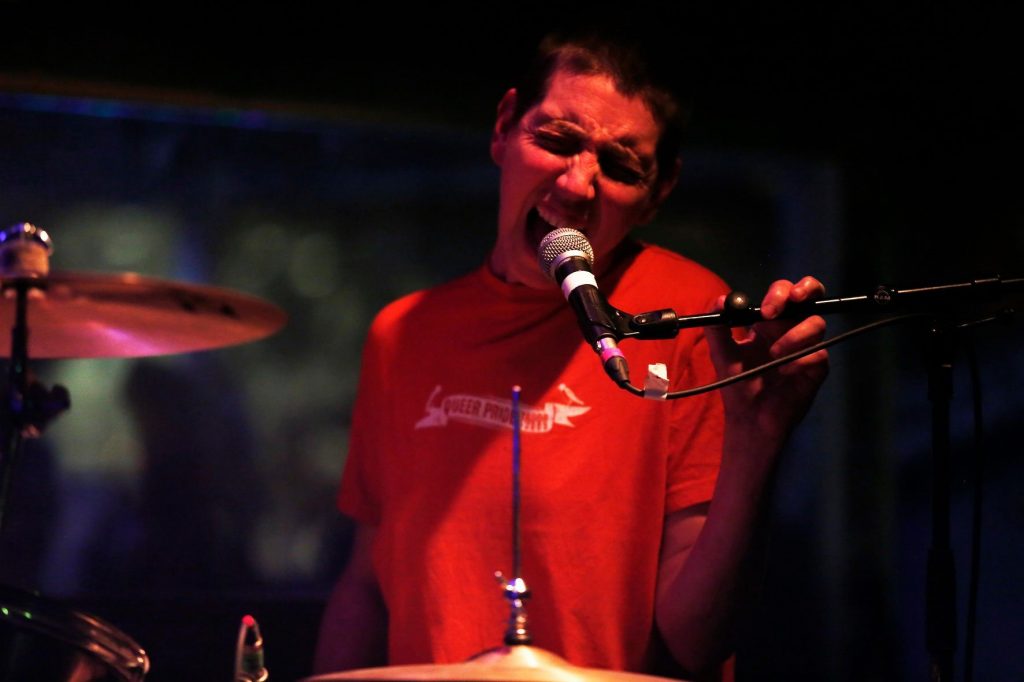
Hilary is pragmatic and realistic even if she remains unstoppable: after organizing and playing in the mini-festival the previous evening, cooking for 20 people, shooting a video clip and having this long chat with me, she will bring lunch to an artist who is painting a mural in the neighboring village. All this with a smile always on her lips and a thousand thoughts lined up in her speeches: “I realize that this will be the last project in my life that I can start from the beginning; both because of my age and also the energy needed to deal with the system, especially because I am alone. Maybe in the future I will move on to the role of sharing knowledge that can help other people realize their projects. It is very important for me as an anarchist: to experiment with and learn how to pass on or share information in a non-hierarchical way. The teacher-student relationship bothers me, even when a person with great experience faces someone at the beginning. Maybe I will get there in 10 years, but right now it is time to act and not only think.”
The relative stability of recent years has led her to deal with people different from those who meet in the punkrock circuit at any latitude: “I want to try to make an alternative home for single, retired, but also independent women: I want to create this project together with young girls and let both groups experience coexisting. They would enter voluntarily and the city would also need to understand and want to do the project. Let’s see what happens if we combine professionals and artists, people who seek this anarchic process of sharing information … ” Of course she has already started experimenting: “When there is a bigger idea I have to find an active and simple method to set in motion the process of experimenting and gathering more information. There was a gentleman here from San Giovanni, a former butcher, completely smitten with me even though I am a lesbian, anarchist and vegetarian! He used to come here almost every day to talk and drink coffee. After six months of these visits, I told him about this idea, because he had an empty house that he had built, but that his family didn’t care about. Unfortunately, he died not long after, but he had started talking about it with other people in San Giovanni, with the Church, and it is very interesting that he had taken the initiative because it is a project very foreign to the local mentality.”
The constant activities focused on the here and now, together with knowledge learned in the past and visions of prospective projects that can develop in the next 15 or 20 years are an inexhaustible wealth. I start off from Invizin recharged with a full desire to make without limits.
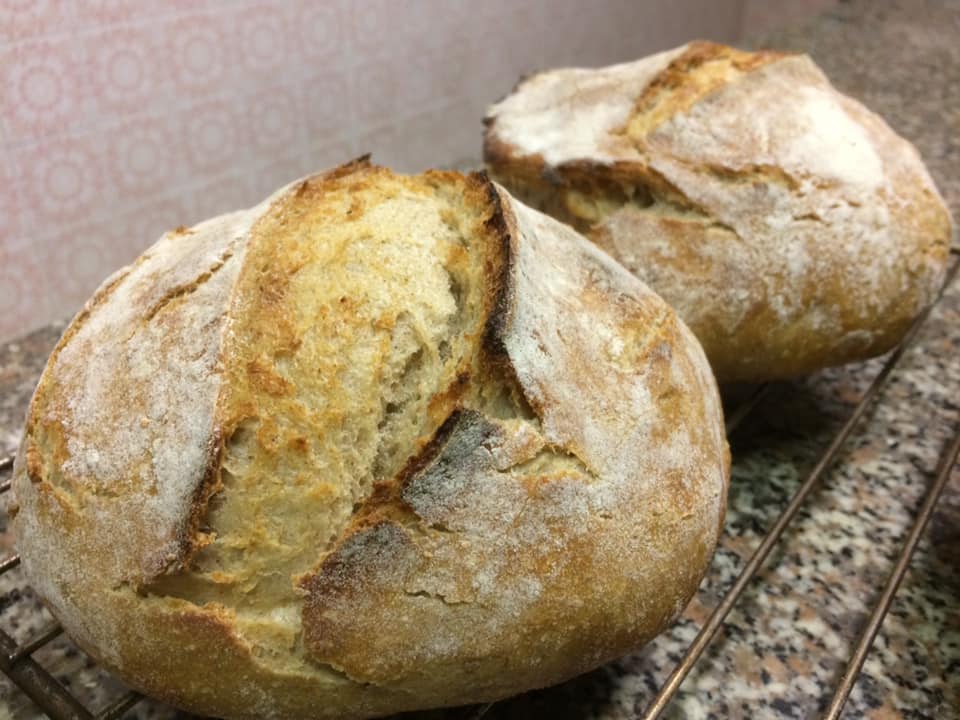
Last modified: 20 Dic 2020

